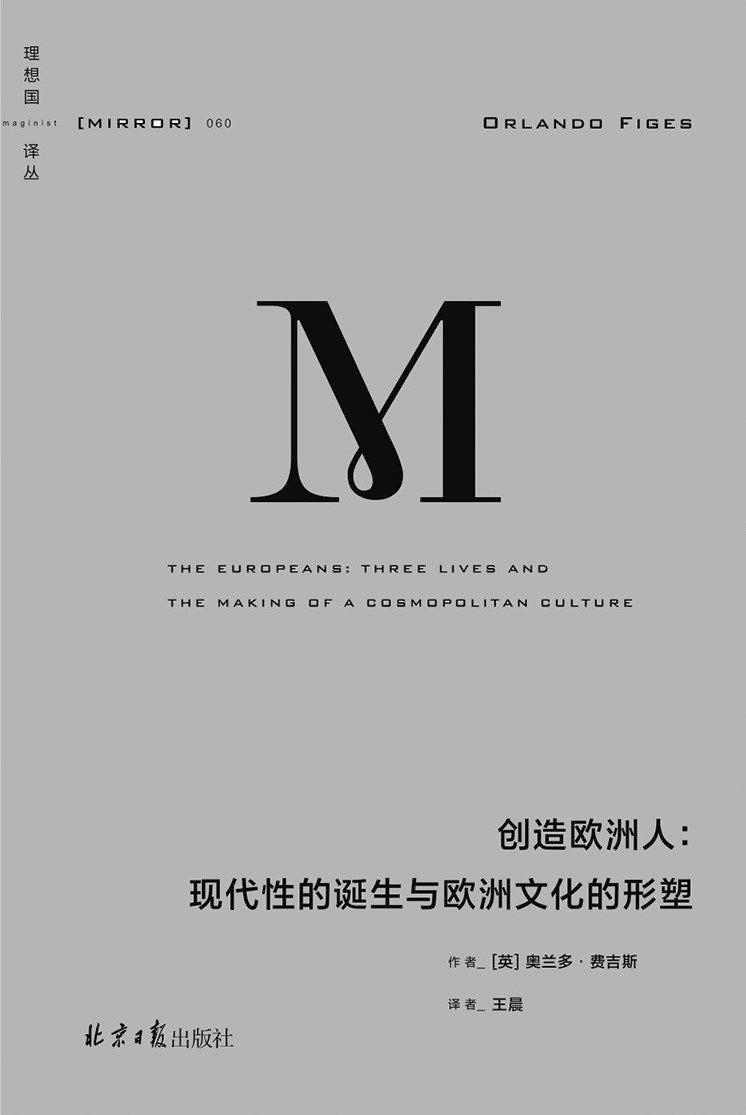WULOLIFE
《创造欧洲人--现代性的诞生与欧洲文化的形塑/理想国译丛》作者:[英]译者: 王晨北京日报出版社
《创造欧洲人--现代性的诞生与欧洲文化的形塑/理想国译丛》作者:[英]译者: 王晨北京日报出版社
Couldn't load pickup availability
Description
内容简介· · · · · ·
1846 6 years 13 years 1500 years 1500 years 1500 years罗斯柴尔德男爵的邀请,搭上首航火车。受邀的旅客包括法国国王国王路易·菲利普一世之子内穆尔公爵和蒙庞西耶公爵、法国和比利时的官员们、大仲马、雨果、戈蒂耶、安格尔等名人。旅途中,柏辽兹指挥乐队在火车上演奏了《葬礼及凯旋大交响曲》。这但却被视为最重要的,因为它连接了法国和低地国、英国与德语区。铁路穿越国界,就此开启了欧洲文化的新时代。作家、艺术家、歌剧团、乐队和演员成为常客,搭乘火车穿梭各国,举办大量的演奏会、艺术展览、读书会、沙龙,国际市场也借由便捷的跨国运输向量产的廉价画作复制品和书籍、乐谱的印刷品开放。
欧洲各国民众开始将欧洲视为一个整体并共享同一种文化——他们阅读同样的书籍、聆听同样的音乐、欣赏同样的绘画、观赏同样的戏剧。最终,他们以“欧洲人”自居,视欧洲为一个不受国界限制的文化交流、翻译、交换的场域,19th anniversary铁路时代带来大众交通与旅行的革命,印刷技术提升作品量产的市场力量,最终艺术与文化成为一门生意,而作品最后能流芳百世或是被历史定。
费吉斯通过俄国作家屠格涅夫、法国女高音保琳娜·维亚尔多和艺术评论家路易·维亚尔多三人的故事,展现19世纪灿烂辉煌的国际主义文化,以及当时的作家、艺术家、音乐家,如何成为跨国的文化中介者,通过蓬勃发展的文化圈将欧洲各国联结成一个文化共同体,使欧洲各国人民接受共同的身份标签——“欧洲人”,进而树立欧洲文的经典地位。
-------------------
★铁路、印刷术与照相术的技术变革,孕育了全新跨国市场,音乐、文学和艺术成为资本主义与国际主义的新战场
便捷的铁路跨国交通和旅行革命,使巡回演出、宣传、世界博览会成为可能,为音乐、文学、艺术的国际流动提供动力;印刷术催生报刊、图书、乐谱和画册的量产,提高作品销量,同时扩散其影响力,艺术与文化成为一门生意;便宜的照相术引发了众人对名人照、家庭集体照和个人肖像照的狂热,让文化明星和艺术作品通过相片名扬
★“文化全球化”时代拉开序幕,“欧洲”等同于“高雅”,“欧洲人”成为文化身份的新标签
欧洲成为文化跨越国界传递、翻译和交流的空间,欧洲的画作复制品,聆听相同的音乐演奏,在各大剧院观看相同的歌剧和芭蕾,参观相同的名胜古迹和博物馆。法国人和意大利人人同时观看了罗西尼的《塞维利亚的理发师》,英国人和德国人同时阅读了屠格涅夫的《猎人笔记》,西班牙欣赏到伦勃朗的《夜巡》— —大家共享一个欧洲文化,不分国籍,都是“欧洲人”。
★跟随屠格涅夫、保琳娜·维亚尔多、路易·维亚尔多的脚步前往欧洲各地,搭起欧陆与俄罗斯文化的桥梁,感受19世纪蓬勃的欧洲文化圈
屠格涅夫与维亚尔多夫妇通过在音乐界、艺术界、新闻业和出版界的人脉,宣传、引介作曲家、艺术家和作家。在文学界成就了福楼拜、莫泊桑、左拉,在音乐界推介了圣-桑、柴可夫斯基、古诺,再到绘画界的柯罗、韦他们三人串联了文学圈、艺术圈和音乐界,国之间以及与俄罗斯间的文化、思想交流——屠格涅夫推介福楼拜和左拉的作品到俄国,不遗余力地在欧陆推广托尔斯泰的《战争与和平》;保琳娜间接促成《卡门》的诞生;路易关于艺术作品的鉴赏指南,定义了欧洲艺术的经典,推动各国博物馆的参观热潮。
★资本市场决定“艺术品味”和“文化正典”,剧院、咖啡馆、画廊、音乐会成为一种“生活方式”
“艺术品位”由有影响力的赞助人、评论家、交易商、收藏家、出版商、新闻业塑造,“文化正典”由他们决定,宣— —李斯特的推崇掀起贝多芬热潮,左拉的好评令马奈的画作谷底翻身,威尔第的歌剧通过出版钢琴乐谱而家喻户晓,经典文库的编纂使雨果和陀思妥耶夫斯基成为国民作家。书籍、音乐、戏剧、绘画成为“欧洲人”的共同嗜好,剧院、人追逐的高雅“生活方式”。
★资本和艺术联手成就“文化追星”,全职创作的文化明星得以掌握自主权,实现财务自由!
巡回演出让帕格尼尼和李斯特吸粉无数,授课和乐谱出版让贝多芬实现财务自由,威尔第成为巴黎歌剧院的金鸡母并收益大量版税,巴尔扎克与狄更斯靠报刊连载小说致富,屠格涅夫的版税和稿费让他周游各国,保琳娜以高人气制霸巴黎歌剧界,米勒和马奈从画作中收获名声与金钱——文学家、作曲家、音乐表演者、画家的全职创作成为可能,艺术也可以成为面包。
★《旁观者》《每日电讯报》《BBC音乐杂志》《BBC历史杂志》和《科克斯评论》年度图书
作者简介· · · · · ·
奥兰多·费吉斯(Orlando Figes,现任英国伦敦大学伯不论是文学艺术,他的一系列解读沙俄及苏联历史的著作如《娜塔莎之舞:俄罗斯文化史》《耳语被遗忘的帝国博弈》等都取得了非凡的成就,是当今英语世界俄罗斯研究的一流大家。作品曾获沃尔夫森奖、NCR图书奖,并入围萨缪尔·约翰逊奖、达夫·文字出版。
